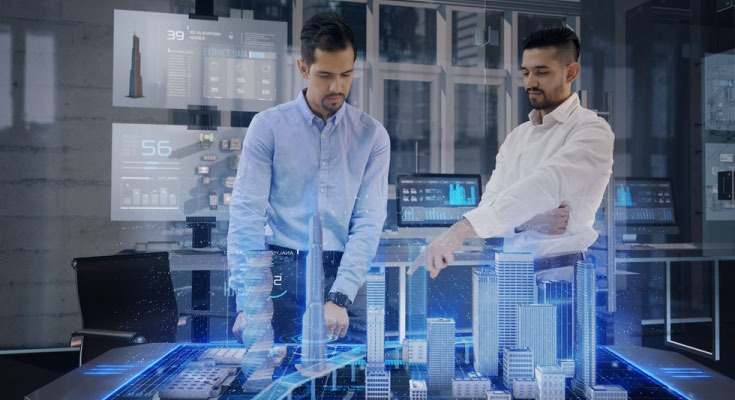Real estate is a growing industry with a lot of money revolving around it. A huge amount of money is spent every year on real-estate promotion. However, lately, the ordinary methods of promotions aren’t just working. Or, it’s safe to assume that the ads have become boring. There’s no jazz in the real-estate advertisement. Almost all the ads include a tour video of the home/office or some other location. Top that off with a random person selling you the dream of next-level living.
All of it has become mundane and consumers have become numb to all of it. This is why real-estate advertisers and builders are trying to incorporate 3D technologies into their processes. For a realtor, it’s a huge deal to plan open houses, click photos and edit them, and promote the property to potential buyers.
All the real-estate agents hate to hear the line “The house doesn’t look similar to the photos”. This is true as photos can be misleading or they can increase the expectations of the clients. A photo is able to capture a single perspective, and even then the rooms don’t look as they should. Unless you set up a professional photo-op for the property, which is extremely expensive.
So, what’s the solution to overcome these challenges. As mentioned above, realtors are leveraging 3D technologies in their advertisements. Moreover, if there are any changes in the model or some changes in the floor plan, the realtor has to do all the efforts all over again.
This effort can be saved using 3D holograms for real-estate promotion. Let’s dive in.
How 3D Holograms can Help the Real-Estate Industry?
The latest 3D Hologram technologies allow the viewers to interact with the hologram and explore every corner of the hologram. The 3D holograms can display the depth of the object, unlike images. So, the prospective clients can explore the property with their hands, and walk around the hologram.
Technologies such as Vision 3D Hologram Table, or Holographic rooms, are the perfect solutions for real-estate promotion. By leveraging these technologies realtors can bring forth a new age for real-estate promotion.
Not just promotion, these 3D holographic technologies also streamline the overall planning process. Smart city designs, skyscrapers designs, and others can become easy with 3D holographic technologies.
Moreover, these 3D holographic technologies make it feel like the images are flying in the air.
Benefits of Using 3D Holograms for Real-Estate Industry
There are tons of benefits of using newer technologies for promoting real estate. We’ve broken them down below:
1. Show Homes Remotely
For remote customers, 3D hologram technologies can provide an added benefit. Realtors can provide your customers with a guided tour of the property. Also, if needed, the prospects can ask you questions about the property to the real estate agents. Interested buyers can click through rooms to better perspectives on what’s being offered.
2. 360 Degree View
A video produced and shot in a 360-degree viewpoint is an enhancement of a typical promotional video. A 360-degree viewing of the property is incredible for all projects. For properties that are still under construction, the 3D hologram projection tech can help in planning and designing. Moreover, it can be used to offer an emotional response, if you can provide narration to your 3d model.
3. Easy Customization
With 3D holograms, customers can ask the realtor to change certain aspects of the home. Such as the furniture, color of the walls, change tiles and add other customization. This way the buyer will be able to make a better decision. The integration of Holograms not only helps the realtor but improves the decision-making process for the customers.
Benefits of Mixed Reality in Property Management
These technologies allow customers to multiple properties in a fraction of the time it previously took them to. Real estate agents can also take care of multiple customers at the same time. This also leads to better closing times, and faster acquisitions.
Final Take: Use of 3D Holo Technologies in Real-Estate
Real estate development is a growing industry, and it is also one of the very few industries that haven’t tasted modernization. There are endless challenges that can be solved with the incorporation of 3D holographic technologies
